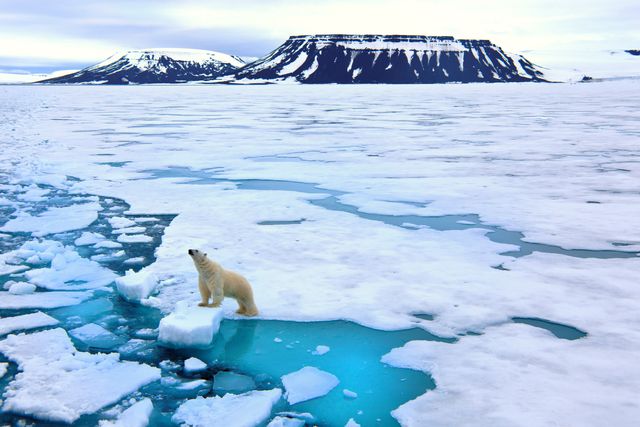One of the more terrifying threats facing future generations is the decline of antibiotic effectiveness alongside the rise of "superbugs." Bacteria breed fast and evolve quickly, and over time many species will evolve a resistance to one antibiotic or another. Given enough time, some bacteria will evolve an immunity to every antibiotic. In fact, some already have. These superbugs can’t be fought with any antibiotics, and getting infected with them can often be a death sentence.
While scientists and doctors desperately try to find some sort of treatment, these superbugs are quickly spreading around the planet, and new research shows just how far. Scientists found samples of superbugs hanging out in Svalbard, Norway, one of the most remote regions of the world.
The specific bacteria these researchers located carries an antibiotic resistance gene called blaNDM-1, which was first identified in busy urban hospitals in India a decade ago. Two years after that, bacteria carrying the gene were found contaminating rivers and other water sources in Delhi. Since then, this gene has spread all over the world, even making it to pristine environments in the Arctic where few humans ever go.
“Polar regions are among the last presumed pristine ecosystems on Earth,” said lead researcher David Graham in a press release. “But less than three years after the first detection of the blaNDM-1 gene in the surface waters of urban India we are finding them thousands of miles away in an area where there has been minimal human impact.”
The researchers suspect bacteria with the gene were carried there by migrating birds or perhaps one of the few human visitors to the area. Superbugs and other bacteria typically get into the system by ingesting contaminated food or drinking contaminated water, and can hang out inside the gut of a person or animal for an indefinite period of time.
This study highlights just how dangerous these types of bacteria can be. As soon as a deadly strain of bacteria gets into the wild, it can be spread to even the remotest corners of the world in only a few years. At this point, we shouldn’t be asking what we should do once superbugs arrive. We should be asking what to do now that they’re already here.














